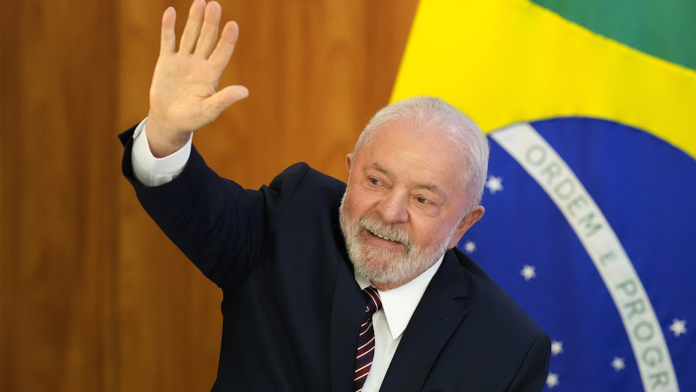The President of Brazil, Luiz Inácio Lula da Silva, will arrive in China on March 12 for one of the most important state visits at the start of his third term. The Brazilian delegation is made up of five governors, eight senators and 19 federal deputies and businessmen. Of the 40 parliamentarians invited by the Planalto Palace, 26 confirmed their presence.
The goal of the Brazilian government is to deepen relations with the country’s main trading partner since 2009. In 2022, China imported more than $89.7 billion in Brazilian products, especially soybeans and minerals, and exported nearly $60.7 billion for the domestic market. The volume traded, 150.4 billion dollars, grew 21 times since Lula’s first visit to the country, in 2004.
Even with the postponement of President Lula’s visit to the Asian country at the end of March for health reasons, part of the delegation that had traveled to China achieved important results, especially in agriculture and livestock, such as the end of the embargo on the sale of beef from Brazil to the country, obtained in record time, only four weeks of suspension.
The Minister of Agriculture and Livestock, Carlos Favaro, who had traveled to Beijing before the presidential delegation, fulfilled part of the initially planned agenda and brought the results to President Lula in a meeting held on April 4. According to him, the Chinese authorities were receptive in all the meetings, and the visit of the presidential delegation to the country could facilitate the signing of new agreements.
What’s on the agenda?
“Important negotiations that we dreamed of many years ago should come true with the presence of President Lula in China,” the minister said after the meeting. One of them is digital certification, which should speed up and make the processing of products more reliable, reducing bureaucracy for Brazilian exporters. The agreement that provides for direct operation between the Brazilian real and the Chinese yuan, without the need for dollarization, should also facilitate trade between the two countries.
Other prominent areas on the event’s agenda are tourism and investment. The Brazilian programs to fight hunger, protect the environment and sustainable development can once again be seen as a reference by the Chinese government.
Chinese SME Development Index rebounds strongly in Q1
Some 20 bilateral agreements are expected to be signed during the visit. One of them will be for the construction of the Earth Resources Satellite-6 (CBERS-6), the sixth in a line of satellites built in partnership between Brazil and China. The advantage of the new model is a technology that allows surveillance of biomes such as the Amazon jungle even with clouds.
In 2022, China imported more than 89.7 billion dollars in Brazilian products, especially soybeans and minerals, and exported almost 60.7 billion for the domestic market
Brazil under Lula: Trading partners with China
2023 marks the 50th anniversary of the start of trade relations between Brazil and China. The first sale between the two countries took place in 1973, a year before the establishment of Sino-Brazilian diplomatic relations.

In 2022, the best-selling Brazilian product in the Chinese market was soybeans. It accounted for 36 percent of the total exported, followed by iron ore, with 20 percent, and oil, with 18 percent. The export profile changed slightly in January and February 2023, with oil leading with 23 percent, followed by soybeans with 22 percent and iron ore with 21 percent.
2023 marks the 50th anniversary of the start of trade relations between Brazil and China.
Trade with China was strengthened in the first two terms of President Lula, since exports to the Chinese market went from only 4.5 billion dollars in 2003, his first year in office, to 30.7 billion in 2010, his last year during the second mandate. Similarly, imports from China amounted to only $2.1 billion in 2003, but experienced rapid growth of 1.100% to reach $56 billion in 2010.
Relaunch of bilateral relations
Lula’s visit this week is part of the reconstruction of the international relations of the new Brazilian government, which includes the trips already made to Argentina, where the meeting of the Community of Latin American and Caribbean States also took place, to Uruguay and the United States, as well as meetings with European leaders. It will also be the first visit outside of the Western Hemisphere.
This will be the third official visit of the Brazilian president to China. The relationship between the two countries has grown closer – and the trade balance has grown continuously and sustainably – since President Lula’s first visit to Beijing in 2004. The president’s second visit to China was in 2009.
The article reflects the views of the author, and not necessarily those of CGTN.
Article republished from the Chinese state media CGTN within the framework of an agreement between both parties to share content. Link to the original article:https://news.cgtn.com/news/2023-04-11/Lula-in-China-Brazil-to-deepen-links-with-main-trading-partner-1iUOseAnCeY/index.html















